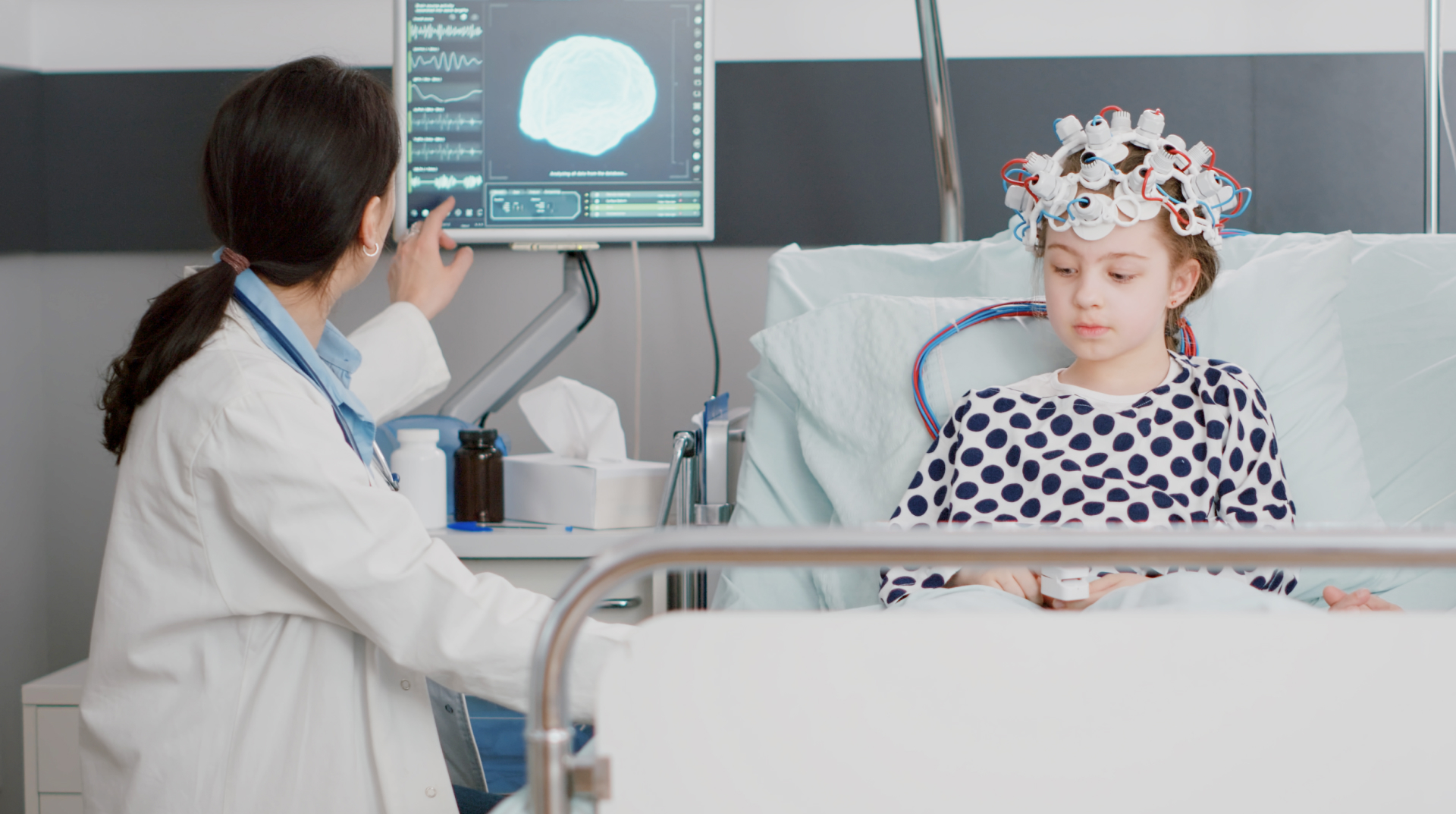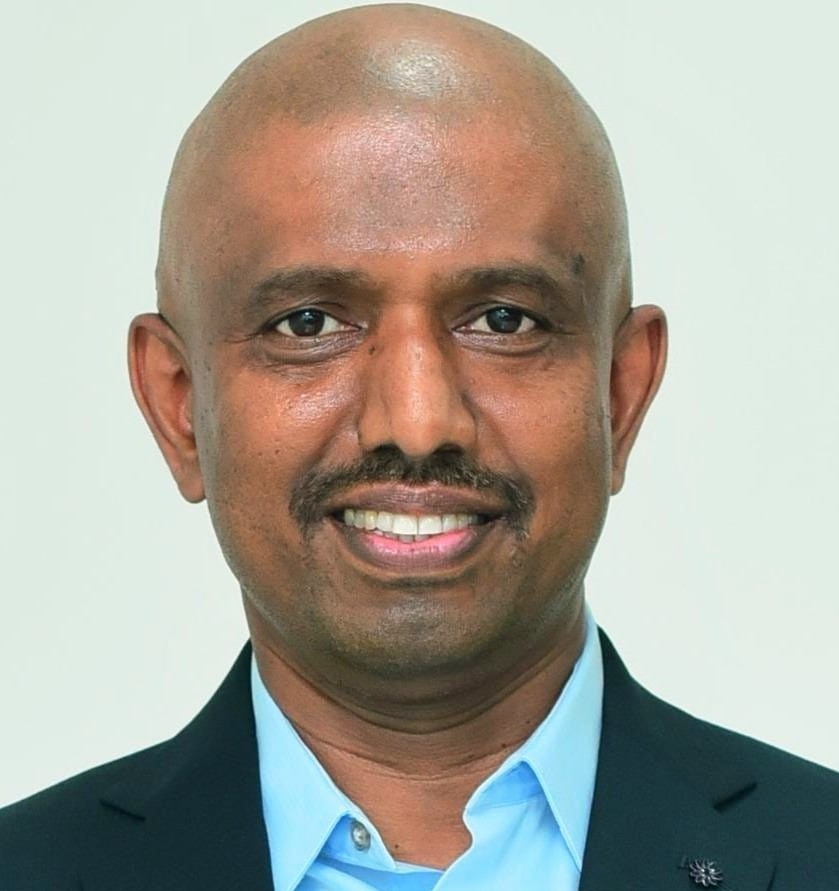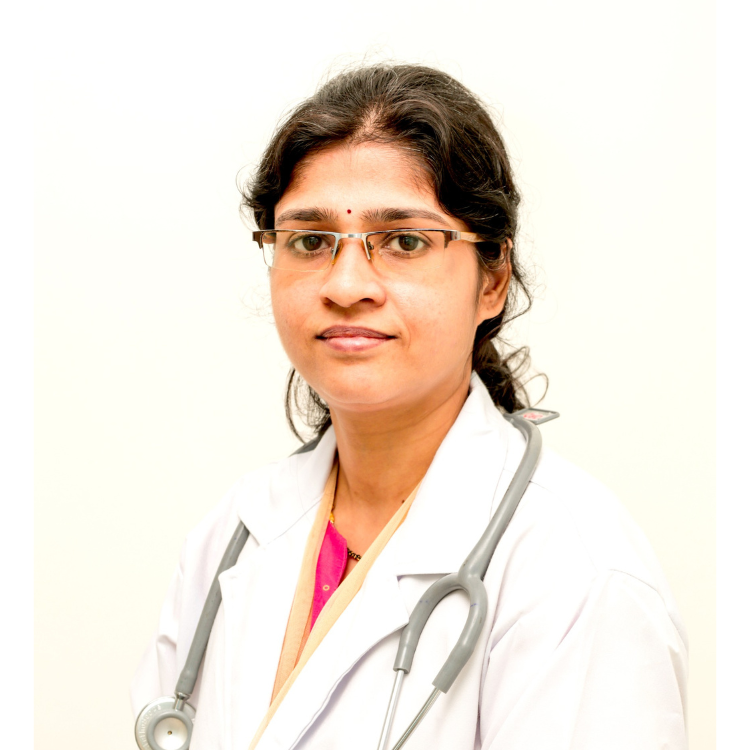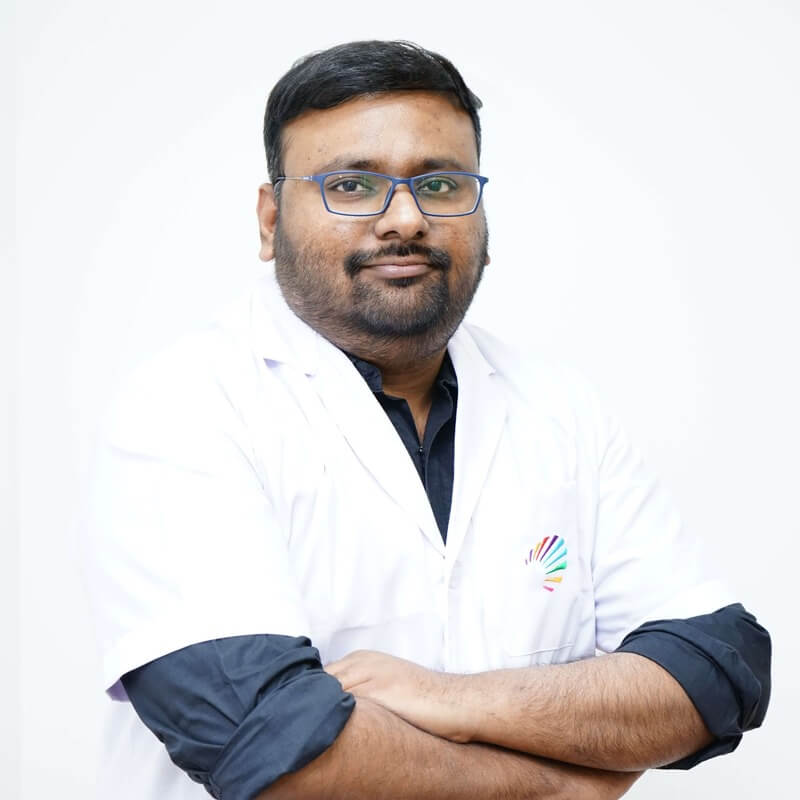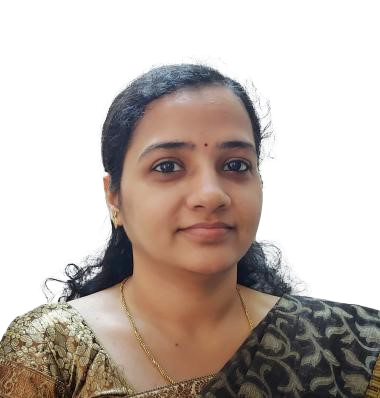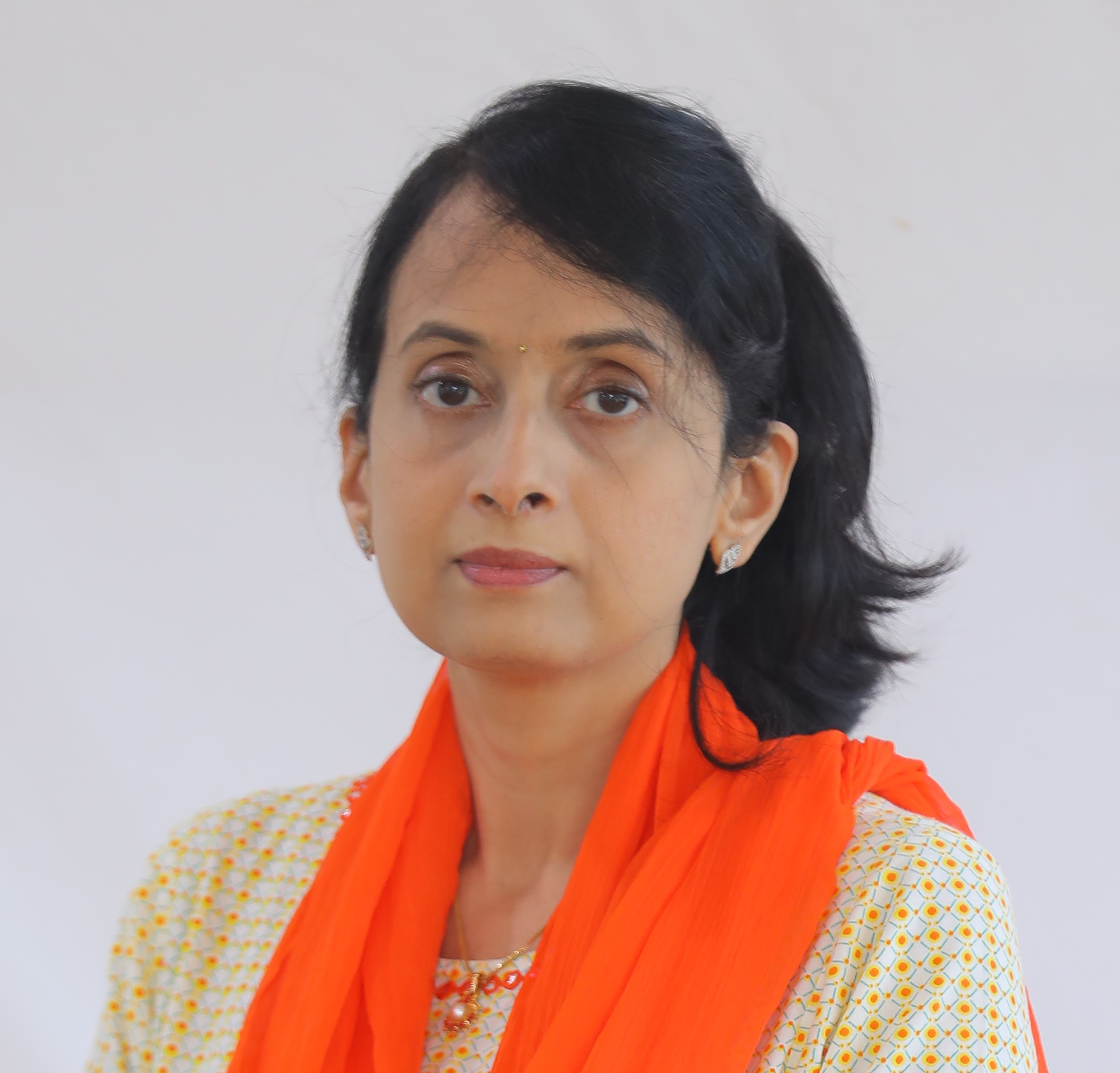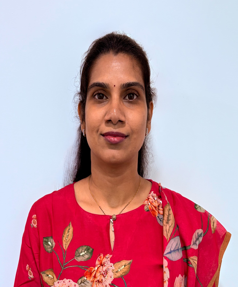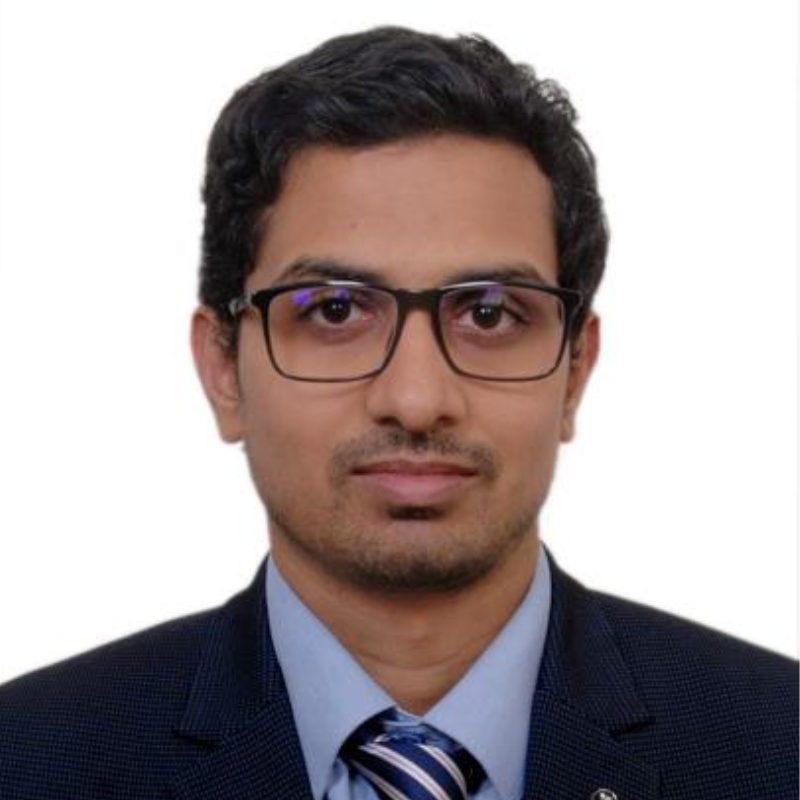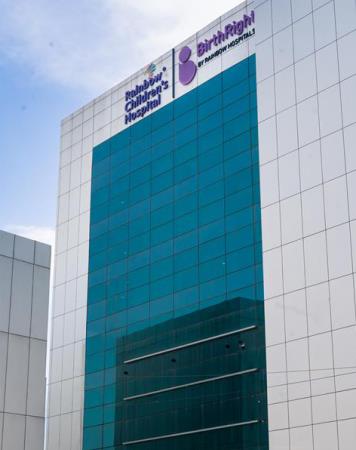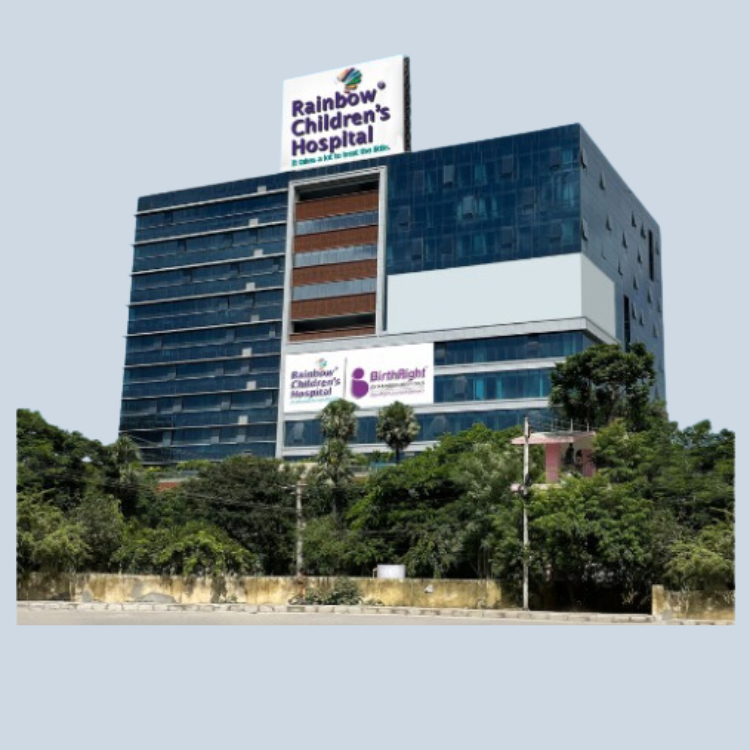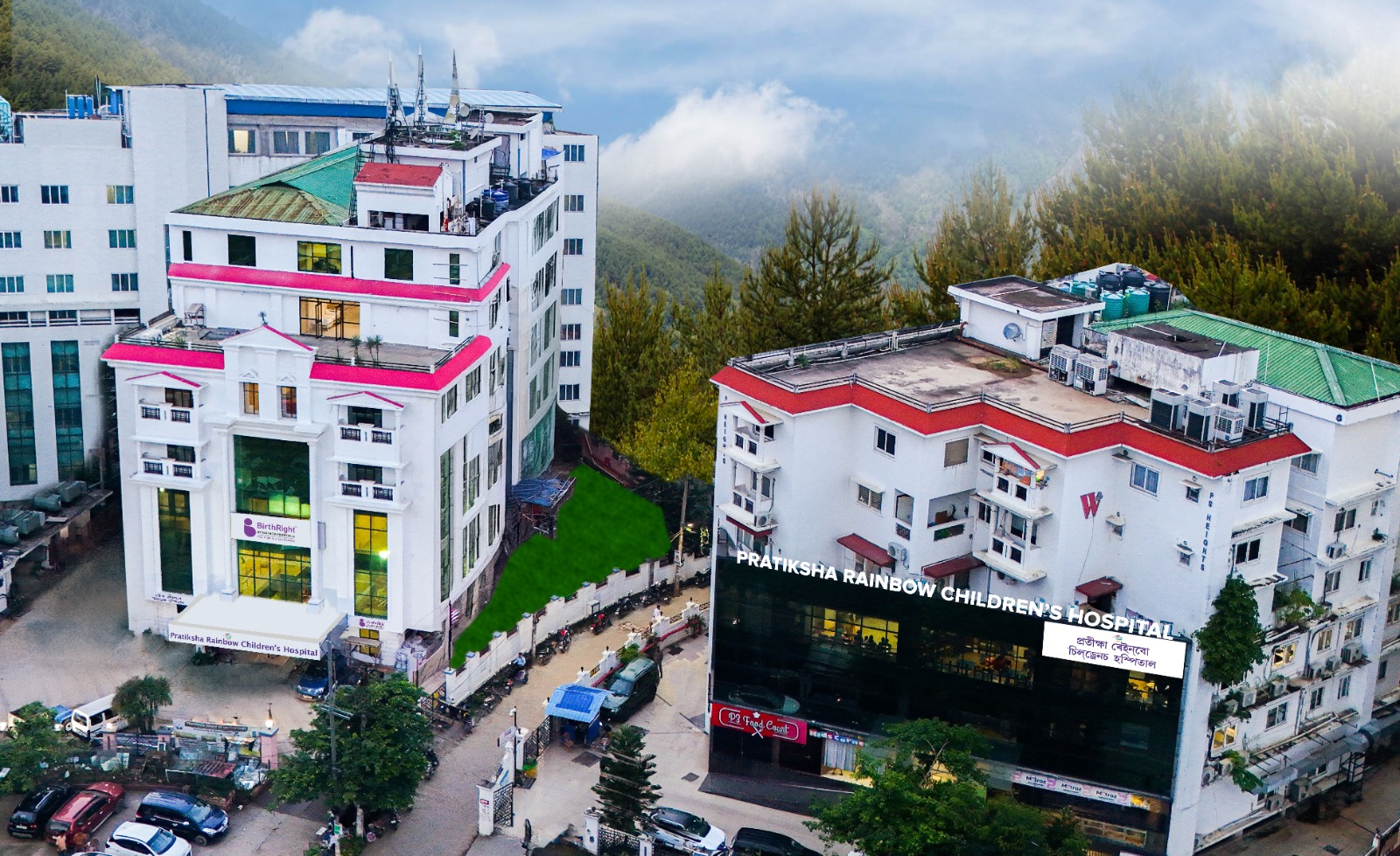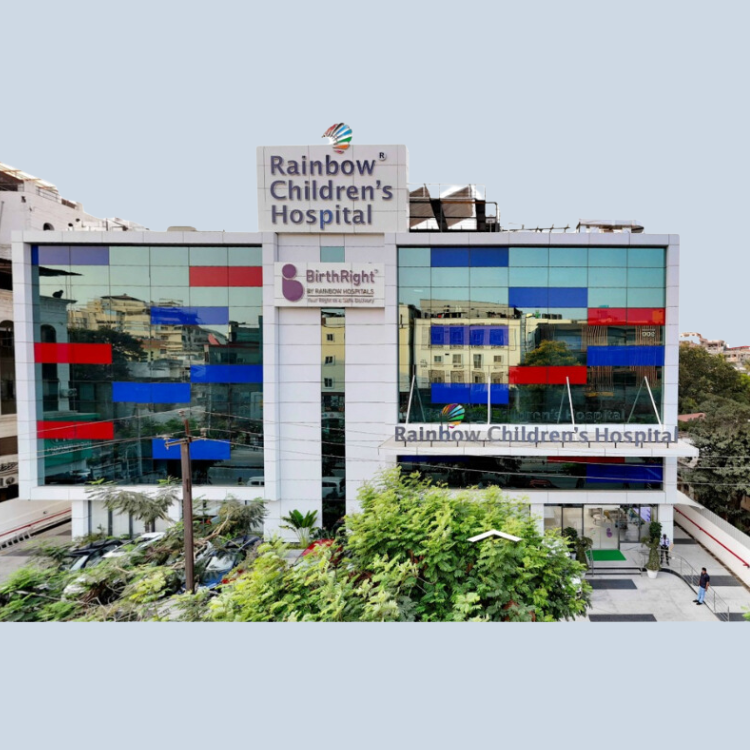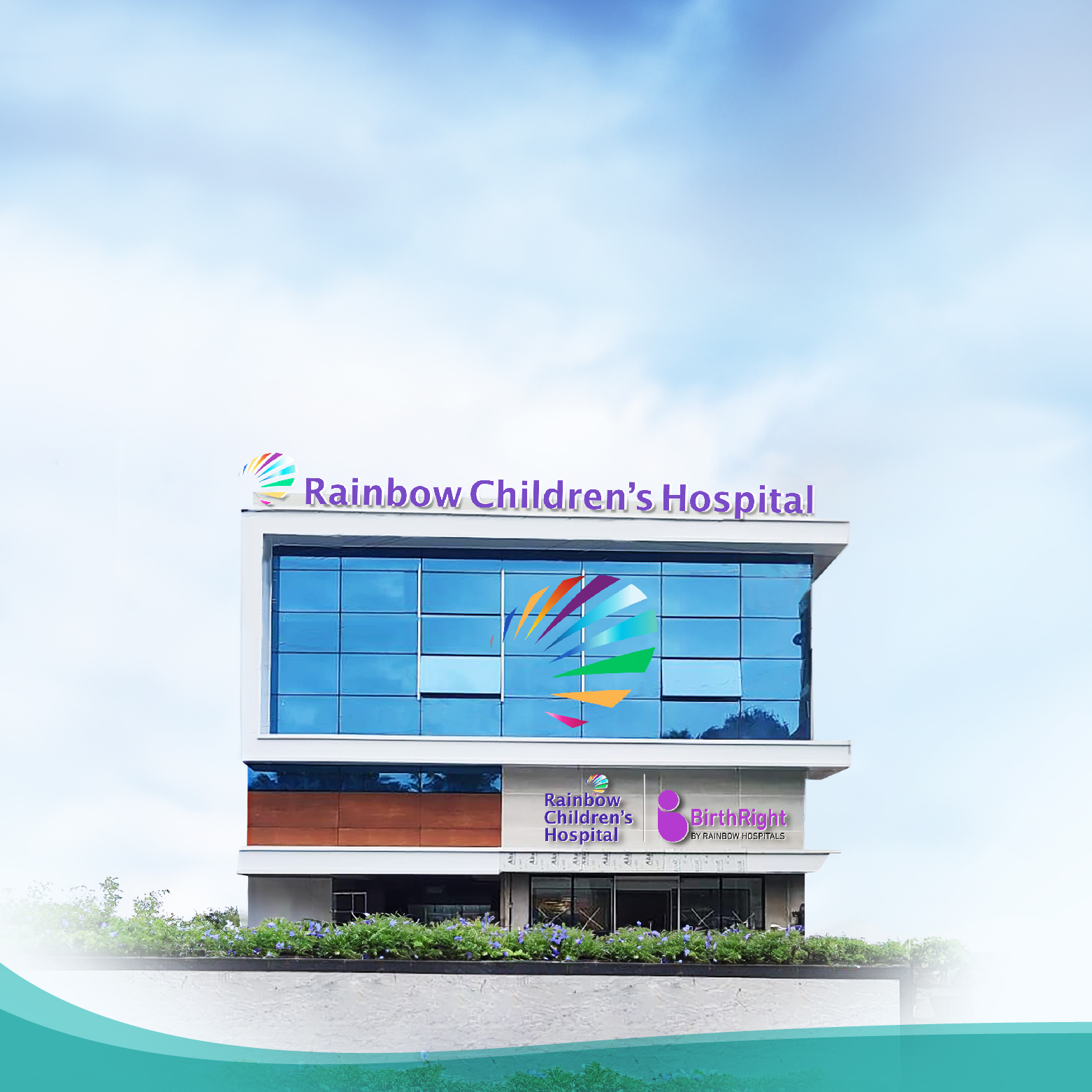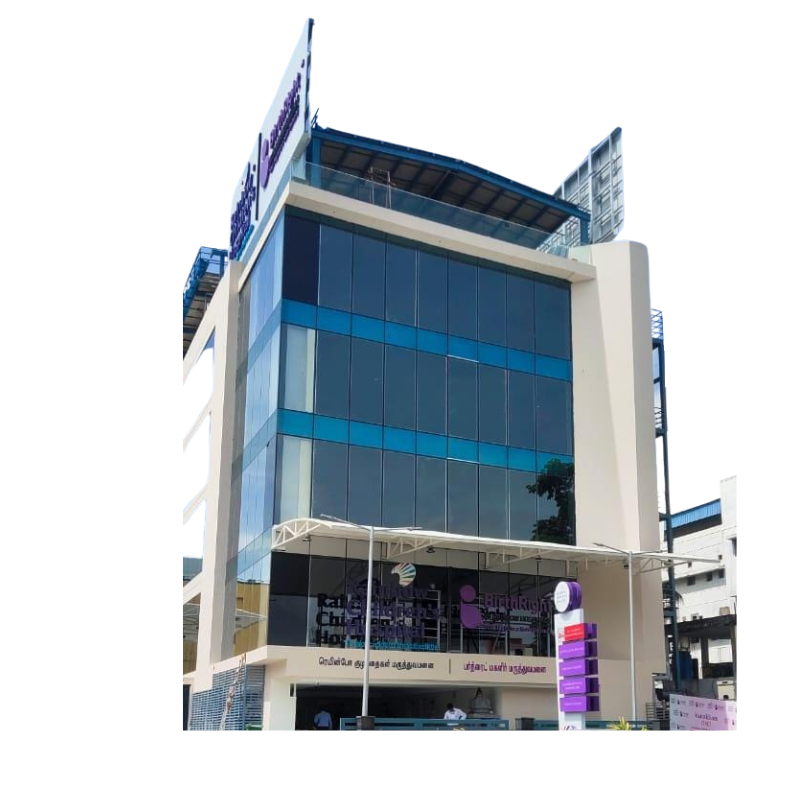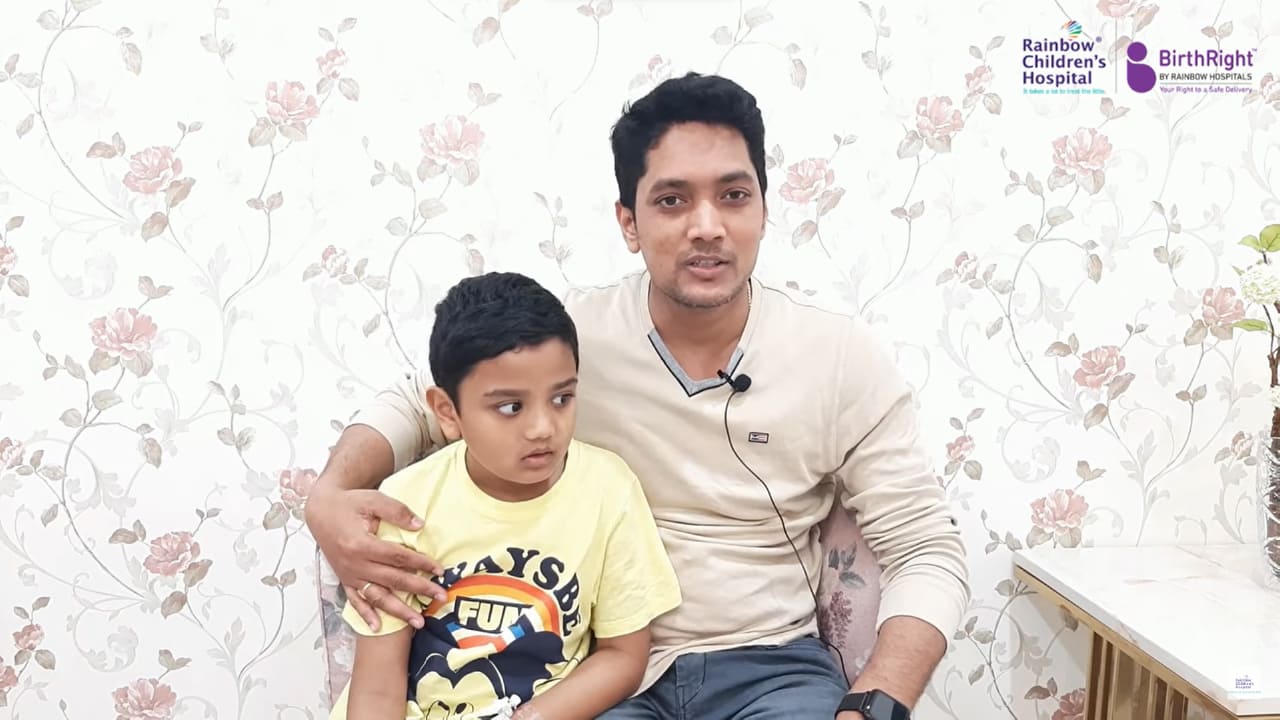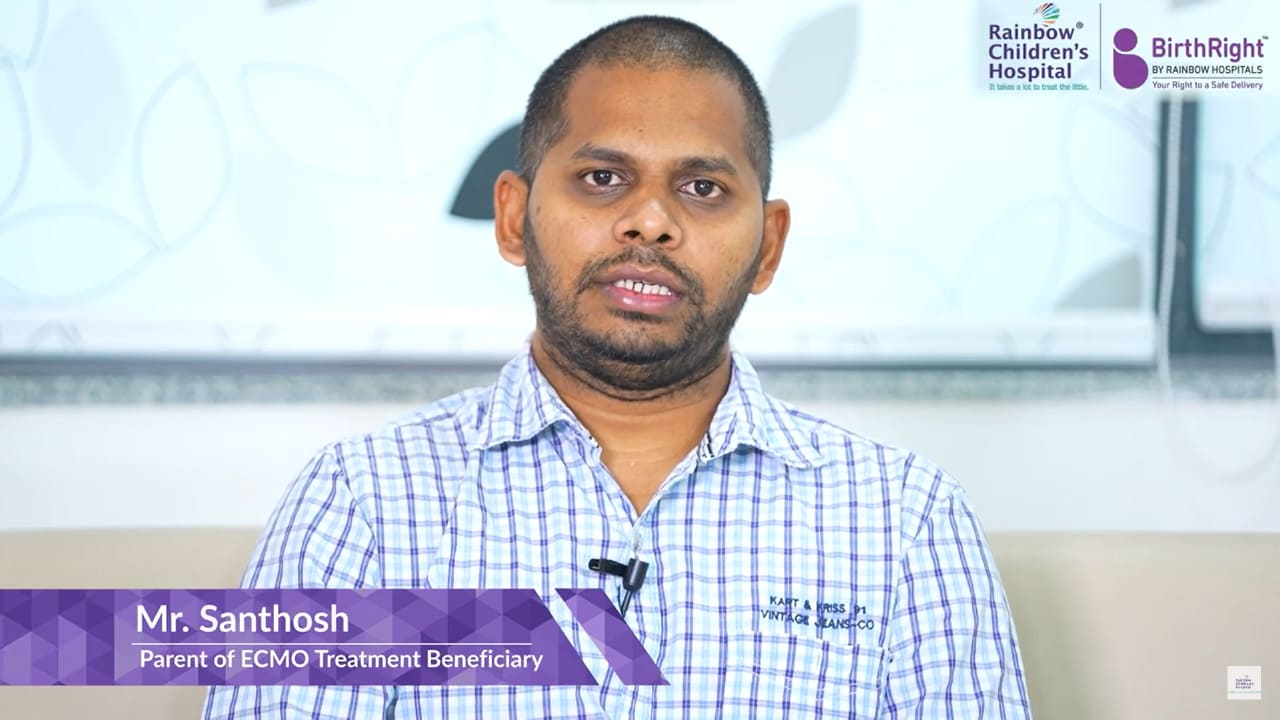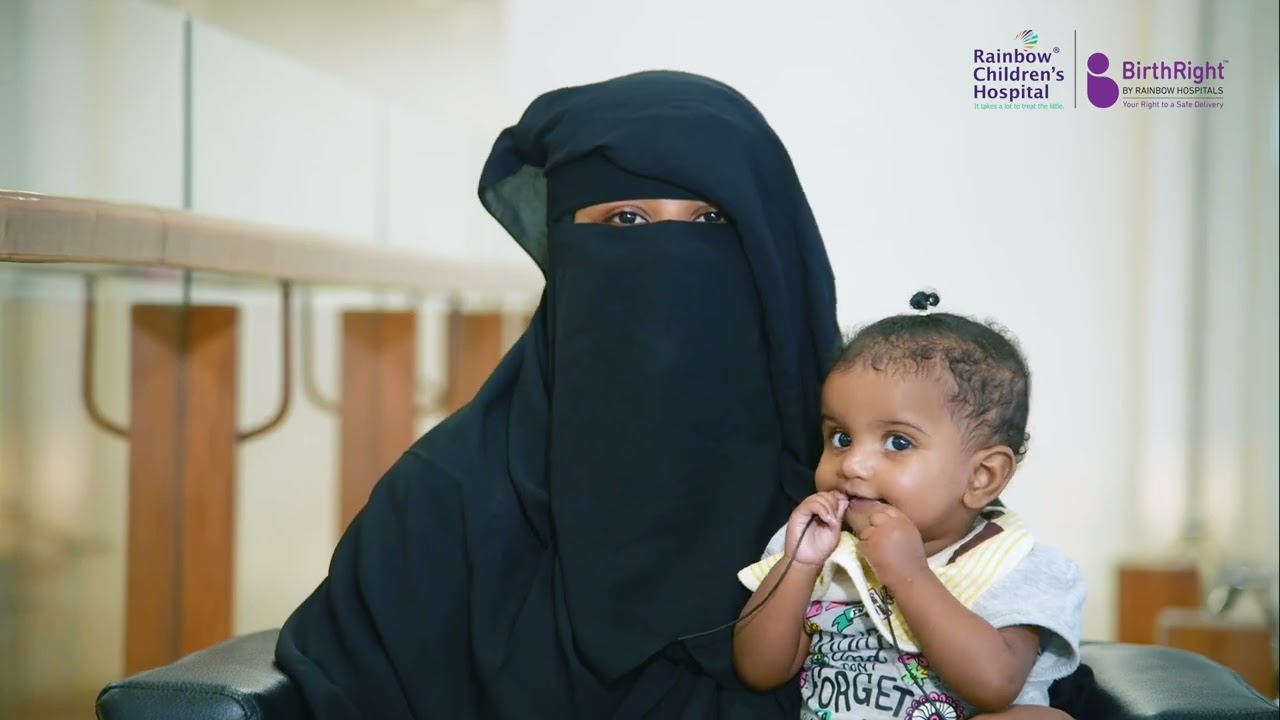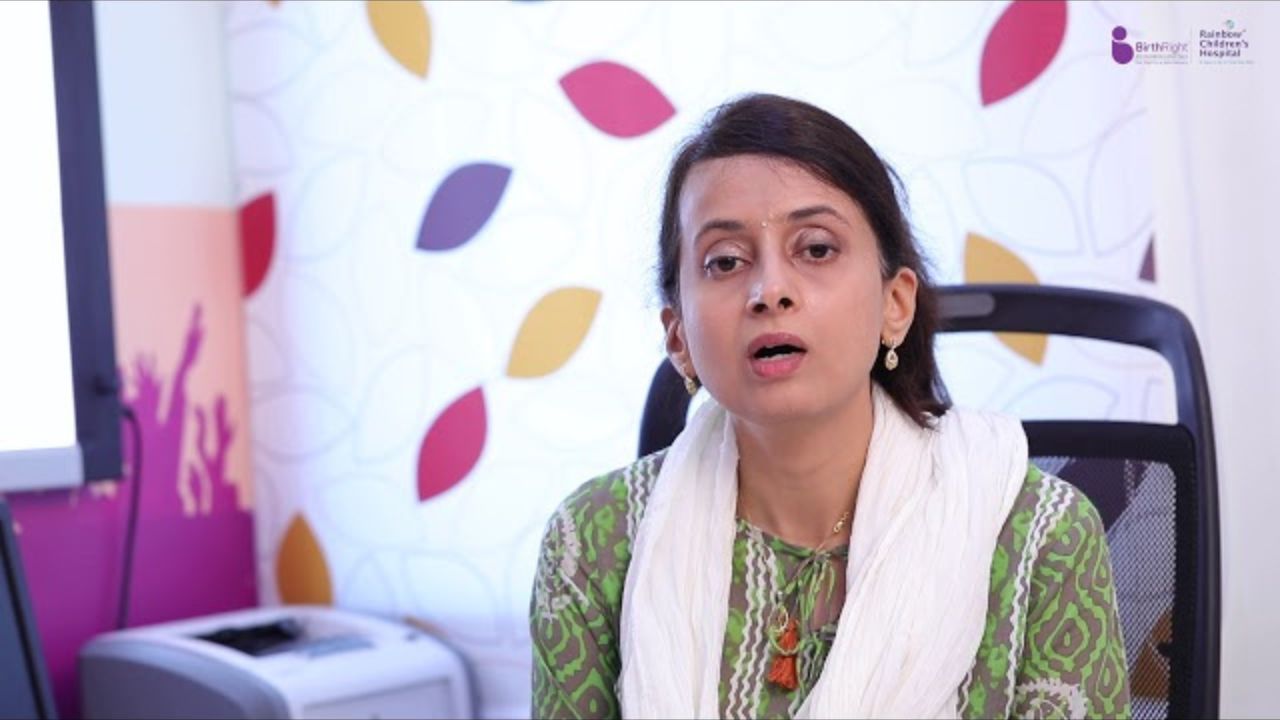Seamless support from diagnosis to post treatment care
Pediatric Neurology
Pediatric Neurology represents a specialized field of medicine dedicated to the intricate assessment and management of intricate neurological cases, along with addressing disorders of the nervous system in neonates, infants, children, and adolescents.
At Rainbow Children’s Hospital, we deliver comprehensive care for children grappling with developmental, behavioral, and neurological challenges, supported by our highly experienced team specializing in pediatric neurology, allied services, and neurorehabilitation. In exceedingly rare instances, neurosurgical interventions may be undertaken to safeguard the child from potential dangers.
Our team of neurologists excels in the precise diagnosis and appropriate treatment of a spectrum of neurological disorders, including Childhood Epilepsy, Febrile Seizures, Autism Spectrum Disorders, Muscle-related conditions such as Muscular Neuropathy or Dystrophy, Behavioral disorders like Tics, ADHD, Sleep Disorders, Headaches encompassing Concussions and Migraines, Cerebral Palsy, Delayed Motor Milestones, Delayed Speech, interventional procedures, and the management of a substantial number of super refractory status epilepticus cases.
The Pediatric Neurology department is equipped to address the following conditions:
- Childhood epilepsy
- Febrile seizures
- Autism spectrum disorders
- Muscle-related problems such as muscular neuropathy or dystrophy
- Behavioral disorders including tics, ADHD, and sleep disturbances
- Headaches, encompassing concussions and migraines
- Intellectual disability
- Developmental disorders such as coordination issues, cerebral palsy, delayed motor milestones, and delayed speech
- Traumatic Brain Injury (TBI)
- Stroke
- Congenital malformations affecting the nervous system
- Congenital birth defects impacting the spinal cord and brain, such as spina bifida
- Brain tumors
- Inflammation or infections of the brain
- Autoimmune conditions like multiple sclerosis
- Genetic disorders affecting the nervous system
- Abnormal cognitive development, learning disabilities, and speech impairments
- Head injuries and their associated complications
- Palliative and hospice care
- Hydrocephalus (accumulation of fluid in the brain)
- Vascular neurology
Key Highlights:
- Specialised in treating Autism Spectrum Disorders
- High quality treatment for brain tumour
- Providing special care for developmental disorder
- Specially trained nursing staff well versed with handling various procedures, preparations & other nursing aspects to provide quality care to patients
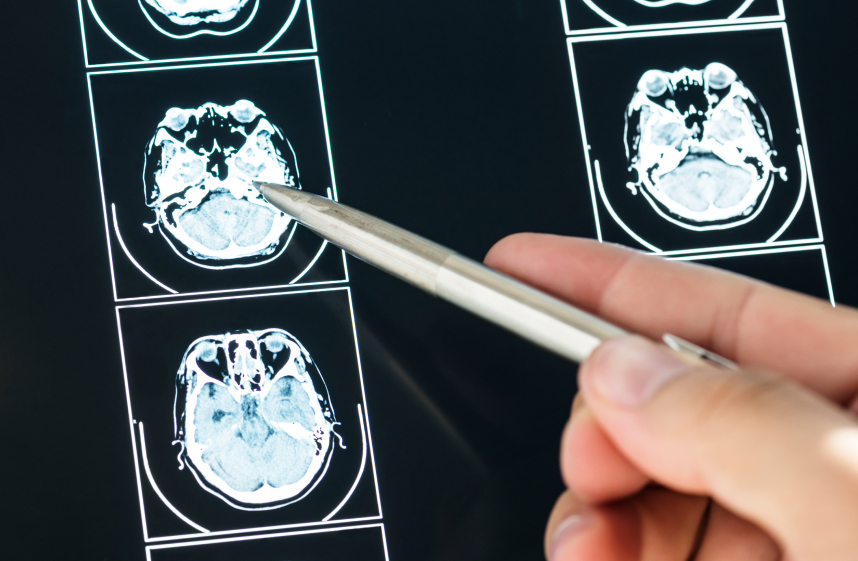
Find a Doctor
Expertise you can trust, Meet our esteemed doctors who bring exceptional knowledge, compassion, and innovation to provide top-notch care for your health and well-being.
Our Hospitals and ClinicsOur Hospitals and Clinics
Rainbow Children's Hospital stands as a testament to the hospital's continual pursuit of excellence and innovation, providing specialized care for women and children.
Request a Call back
Tap to Fill FormRequest a Call back
Blogs
Discover our most recent health articles provided by our reliable experts.
What Are People Saying About Us
Embark on a journey of inspiration and hope with our patient success stories, complemented by informative videos from our dedicated doctors.
Test
Brain tumor surgery - This includes diagnosis, neurology, neuro-oncology, neurosurgery, and neuropsychology.
The most complicated neurosurgeries are:\n\n Brain tumor surgery - This includes diagnosis, neurology, neuro-oncology, neurosurgery, and neuropsychology.\n Craniofacial abnormalities - This includes abnormalities of facial or head bones, general present at birth. In such cases, pediatric neurosurgeons have to work with pediatric plastic and craniofacial surgeons for correcting issues that might be affecting the growth and development of your child.\n Hydrocephalus - Some kids are born with extra fluid around or inside the brain. This condition is known as hydrocephalus. This extra fluid increases the pressure inside the head of the baby. Neonatal specialists and pediatric neurosurgeons work together can treat this condition. Hydrocephalus can be congenital, occur at birth or develop later. Our pediatric doctors will create a personalized treatment for your child depending on his/her condition.\n Trauma - Children who have been in accidents can have spinal cord or acute brain trauma. This also includes chronic neurological disorders caused by major trauma.\n Pediatric epilepsy - This includes surgical and medical solutions for diagnosing and treating seizure disorders and other associated syndromes.\n Neonatal neurosurgery and neurology - This includes complicated brain disorders in newborns like periventricular leukomalacia (PVL) and intraventricular hemorrhage in babies. These serious disorders occur when there is softening and bleeding in brain tissue. Treatment of this requires expert care by neonatal specialists and pediatric neurosurgeons.\n Spasticity management - This is a condition in which the muscles get contracted continuously. This results in tightness and stiffness of the muscles that cause interference with normal speech, movement, and gait. It is usually caused by damage to the part of the spinal cord or brain controlling the voluntary movement. Through a combination of medical, surgical and therapeutic treatment, a patient can get treatment for spasticity and other physical problems.\n Spina Bifida - This is a birth defect that causes an incomplete closing of the spinal cord and the membranes surrounding it in the early months of pregnancy. They can be of three types: spina bifida myelomeningocele, meningocele, and the occulta. Pediatric neurosurgical specialists are needed for treating children with spina bifida, myelodysplasia, and other defects.\n Vascular deformations - Arteriovenous malformation or AVM is the most common brain vascular malformation. The vascular system is responsible for carrying the blood throughout your body through veins, capillaries, and arteries. If there is any vascular irregularity and malformation in the brain, it can create a risk of intracerebral hemorrhage or stroke. Also, blood vessels start to grow unusually and start becoming more visible. These are called birthmarks, port wine stains, or hemangiomas. These marks can disappear or shrink after the child turns 5. However, if necessary, you can try some surgical options.\n Minimally invasive surgery - This type of surgery leads to less pain, short stay, and less traumatic surgery. Therefore it is better than traditional surgery. :12929, 3,, 15 Merriweather Craniofacial abnormalities - This includes abnormalities of facial or head bones, general present at birth. In such cases, pediatric neurosurgeons have to work with pediatric plastic and craniofacial surgeons for correcting issues that might be affecting the growth and development of your child.
The most complicated neurosurgeries are:\n\n Brain tumor surgery - This includes diagnosis, neurology, neuro-oncology, neurosurgery, and neuropsychology.\n Craniofacial abnormalities - This includes abnormalities of facial or head bones, general present at birth. In such cases, pediatric neurosurgeons have to work with pediatric plastic and craniofacial surgeons for correcting issues that might be affecting the growth and development of your child.\n Hydrocephalus - Some kids are born with extra fluid around or inside the brain. This condition is known as hydrocephalus. This extra fluid increases the pressure inside the head of the baby. Neonatal specialists and pediatric neurosurgeons work together can treat this condition. Hydrocephalus can be congenital, occur at birth or develop later. Our pediatric doctors will create a personalized treatment for your child depending on his/her condition.\n Trauma - Children who have been in accidents can have spinal cord or acute brain trauma. This also includes chronic neurological disorders caused by major trauma.\n Pediatric epilepsy - This includes surgical and medical solutions for diagnosing and treating seizure disorders and other associated syndromes.\n Neonatal neurosurgery and neurology - This includes complicated brain disorders in newborns like periventricular leukomalacia (PVL) and intraventricular hemorrhage in babies. These serious disorders occur when there is softening and bleeding in brain tissue. Treatment of this requires expert care by neonatal specialists and pediatric neurosurgeons.\n Spasticity management - This is a condition in which the muscles get contracted continuously. This results in tightness and stiffness of the muscles that cause interference with normal speech, movement, and gait. It is usually caused by damage to the part of the spinal cord or brain controlling the voluntary movement. Through a combination of medical, surgical and therapeutic treatment, a patient can get treatment for spasticity and other physical problems.\n Spina Bifida - This is a birth defect that causes an incomplete closing of the spinal cord and the membranes surrounding it in the early months of pregnancy. They can be of three types: spina bifida myelomeningocele, meningocele, and the occulta. Pediatric neurosurgical specialists are needed for treating children with spina bifida, myelodysplasia, and other defects.\n Vascular deformations - Arteriovenous malformation or AVM is the most common brain vascular malformation. The vascular system is responsible for carrying the blood throughout your body through veins, capillaries, and arteries. If there is any vascular irregularity and malformation in the brain, it can create a risk of intracerebral hemorrhage or stroke. Also, blood vessels start to grow unusually and start becoming more visible. These are called birthmarks, port wine stains, or hemangiomas. These marks can disappear or shrink after the child turns 5. However, if necessary, you can try some surgical options.\n Minimally invasive surgery - This type of surgery leads to less pain, short stay, and less traumatic surgery. Therefore it is better than traditional surgery. :12929, 3,, 15 Merriweather Hydrocephalus - Some kids are born with extra fluid around or inside the brain. This condition is known as hydrocephalus. This extra fluid increases the pressure inside the head of the baby. Neonatal specialists and pediatric neurosurgeons work together can treat this condition. Hydrocephalus can be congenital, occur at birth or develop later. Our pediatric doctors will create a personalized treatment for your child depending on his/her condition.
The most complicated neurosurgeries are:\n\n Brain tumor surgery - This includes diagnosis, neurology, neuro-oncology, neurosurgery, and neuropsychology.\n Craniofacial abnormalities - This includes abnormalities of facial or head bones, general present at birth. In such cases, pediatric neurosurgeons have to work with pediatric plastic and craniofacial surgeons for correcting issues that might be affecting the growth and development of your child.\n Hydrocephalus - Some kids are born with extra fluid around or inside the brain. This condition is known as hydrocephalus. This extra fluid increases the pressure inside the head of the baby. Neonatal specialists and pediatric neurosurgeons work together can treat this condition. Hydrocephalus can be congenital, occur at birth or develop later. Our pediatric doctors will create a personalized treatment for your child depending on his/her condition.\n Trauma - Children who have been in accidents can have spinal cord or acute brain trauma. This also includes chronic neurological disorders caused by major trauma.\n Pediatric epilepsy - This includes surgical and medical solutions for diagnosing and treating seizure disorders and other associated syndromes.\n Neonatal neurosurgery and neurology - This includes complicated brain disorders in newborns like periventricular leukomalacia (PVL) and intraventricular hemorrhage in babies. These serious disorders occur when there is softening and bleeding in brain tissue. Treatment of this requires expert care by neonatal specialists and pediatric neurosurgeons.\n Spasticity management - This is a condition in which the muscles get contracted continuously. This results in tightness and stiffness of the muscles that cause interference with normal speech, movement, and gait. It is usually caused by damage to the part of the spinal cord or brain controlling the voluntary movement. Through a combination of medical, surgical and therapeutic treatment, a patient can get treatment for spasticity and other physical problems.\n Spina Bifida - This is a birth defect that causes an incomplete closing of the spinal cord and the membranes surrounding it in the early months of pregnancy. They can be of three types: spina bifida myelomeningocele, meningocele, and the occulta. Pediatric neurosurgical specialists are needed for treating children with spina bifida, myelodysplasia, and other defects.\n Vascular deformations - Arteriovenous malformation or AVM is the most common brain vascular malformation. The vascular system is responsible for carrying the blood throughout your body through veins, capillaries, and arteries. If there is any vascular irregularity and malformation in the brain, it can create a risk of intracerebral hemorrhage or stroke. Also, blood vessels start to grow unusually and start becoming more visible. These are called birthmarks, port wine stains, or hemangiomas. These marks can disappear or shrink after the child turns 5. However, if necessary, you can try some surgical options.\n Minimally invasive surgery - This type of surgery leads to less pain, short stay, and less traumatic surgery. Therefore it is better than traditional surgery. :12929, 3,, 15 Merriweather Trauma - Children who have been in accidents can have spinal cord or acute brain trauma. This also includes chronic neurological disorders caused by major trauma.
The most complicated neurosurgeries are:\n\n Brain tumor surgery - This includes diagnosis, neurology, neuro-oncology, neurosurgery, and neuropsychology.\n Craniofacial abnormalities - This includes abnormalities of facial or head bones, general present at birth. In such cases, pediatric neurosurgeons have to work with pediatric plastic and craniofacial surgeons for correcting issues that might be affecting the growth and development of your child.\n Hydrocephalus - Some kids are born with extra fluid around or inside the brain. This condition is known as hydrocephalus. This extra fluid increases the pressure inside the head of the baby. Neonatal specialists and pediatric neurosurgeons work together can treat this condition. Hydrocephalus can be congenital, occur at birth or develop later. Our pediatric doctors will create a personalized treatment for your child depending on his/her condition.\n Trauma - Children who have been in accidents can have spinal cord or acute brain trauma. This also includes chronic neurological disorders caused by major trauma.\n Pediatric epilepsy - This includes surgical and medical solutions for diagnosing and treating seizure disorders and other associated syndromes.\n Neonatal neurosurgery and neurology - This includes complicated brain disorders in newborns like periventricular leukomalacia (PVL) and intraventricular hemorrhage in babies. These serious disorders occur when there is softening and bleeding in brain tissue. Treatment of this requires expert care by neonatal specialists and pediatric neurosurgeons.\n Spasticity management - This is a condition in which the muscles get contracted continuously. This results in tightness and stiffness of the muscles that cause interference with normal speech, movement, and gait. It is usually caused by damage to the part of the spinal cord or brain controlling the voluntary movement. Through a combination of medical, surgical and therapeutic treatment, a patient can get treatment for spasticity and other physical problems.\n Spina Bifida - This is a birth defect that causes an incomplete closing of the spinal cord and the membranes surrounding it in the early months of pregnancy. They can be of three types: spina bifida myelomeningocele, meningocele, and the occulta. Pediatric neurosurgical specialists are needed for treating children with spina bifida, myelodysplasia, and other defects.\n Vascular deformations - Arteriovenous malformation or AVM is the most common brain vascular malformation. The vascular system is responsible for carrying the blood throughout your body through veins, capillaries, and arteries. If there is any vascular irregularity and malformation in the brain, it can create a risk of intracerebral hemorrhage or stroke. Also, blood vessels start to grow unusually and start becoming more visible. These are called birthmarks, port wine stains, or hemangiomas. These marks can disappear or shrink after the child turns 5. However, if necessary, you can try some surgical options.\n Minimally invasive surgery - This type of surgery leads to less pain, short stay, and less traumatic surgery. Therefore it is better than traditional surgery. :12929, 3,, 15 Merriweather Pediatric epilepsy - This includes surgical and medical solutions for diagnosing and treating seizure disorders and other associated syndromes.
The most complicated neurosurgeries are:\n\n Brain tumor surgery - This includes diagnosis, neurology, neuro-oncology, neurosurgery, and neuropsychology.\n Craniofacial abnormalities - This includes abnormalities of facial or head bones, general present at birth. In such cases, pediatric neurosurgeons have to work with pediatric plastic and craniofacial surgeons for correcting issues that might be affecting the growth and development of your child.\n Hydrocephalus - Some kids are born with extra fluid around or inside the brain. This condition is known as hydrocephalus. This extra fluid increases the pressure inside the head of the baby. Neonatal specialists and pediatric neurosurgeons work together can treat this condition. Hydrocephalus can be congenital, occur at birth or develop later. Our pediatric doctors will create a personalized treatment for your child depending on his/her condition.\n Trauma - Children who have been in accidents can have spinal cord or acute brain trauma. This also includes chronic neurological disorders caused by major trauma.\n Pediatric epilepsy - This includes surgical and medical solutions for diagnosing and treating seizure disorders and other associated syndromes.\n Neonatal neurosurgery and neurology - This includes complicated brain disorders in newborns like periventricular leukomalacia (PVL) and intraventricular hemorrhage in babies. These serious disorders occur when there is softening and bleeding in brain tissue. Treatment of this requires expert care by neonatal specialists and pediatric neurosurgeons.\n Spasticity management - This is a condition in which the muscles get contracted continuously. This results in tightness and stiffness of the muscles that cause interference with normal speech, movement, and gait. It is usually caused by damage to the part of the spinal cord or brain controlling the voluntary movement. Through a combination of medical, surgical and therapeutic treatment, a patient can get treatment for spasticity and other physical problems.\n Spina Bifida - This is a birth defect that causes an incomplete closing of the spinal cord and the membranes surrounding it in the early months of pregnancy. They can be of three types: spina bifida myelomeningocele, meningocele, and the occulta. Pediatric neurosurgical specialists are needed for treating children with spina bifida, myelodysplasia, and other defects.\n Vascular deformations - Arteriovenous malformation or AVM is the most common brain vascular malformation. The vascular system is responsible for carrying the blood throughout your body through veins, capillaries, and arteries. If there is any vascular irregularity and malformation in the brain, it can create a risk of intracerebral hemorrhage or stroke. Also, blood vessels start to grow unusually and start becoming more visible. These are called birthmarks, port wine stains, or hemangiomas. These marks can disappear or shrink after the child turns 5. However, if necessary, you can try some surgical options.\n Minimally invasive surgery - This type of surgery leads to less pain, short stay, and less traumatic surgery. Therefore it is better than traditional surgery. :12929, 3,, 15 Merriweather Neonatal neurosurgery and neurology - This includes complicated brain disorders in newborns like periventricular leukomalacia (PVL) and intraventricular hemorrhage in babies. These serious disorders occur when there is softening and bleeding in brain tissue. Treatment of this requires expert care by neonatal specialists and pediatric neurosurgeons.
The most complicated neurosurgeries are:\n\n Brain tumor surgery - This includes diagnosis, neurology, neuro-oncology, neurosurgery, and neuropsychology.\n Craniofacial abnormalities - This includes abnormalities of facial or head bones, general present at birth. In such cases, pediatric neurosurgeons have to work with pediatric plastic and craniofacial surgeons for correcting issues that might be affecting the growth and development of your child.\n Hydrocephalus - Some kids are born with extra fluid around or inside the brain. This condition is known as hydrocephalus. This extra fluid increases the pressure inside the head of the baby. Neonatal specialists and pediatric neurosurgeons work together can treat this condition. Hydrocephalus can be congenital, occur at birth or develop later. Our pediatric doctors will create a personalized treatment for your child depending on his/her condition.\n Trauma - Children who have been in accidents can have spinal cord or acute brain trauma. This also includes chronic neurological disorders caused by major trauma.\n Pediatric epilepsy - This includes surgical and medical solutions for diagnosing and treating seizure disorders and other associated syndromes.\n Neonatal neurosurgery and neurology - This includes complicated brain disorders in newborns like periventricular leukomalacia (PVL) and intraventricular hemorrhage in babies. These serious disorders occur when there is softening and bleeding in brain tissue. Treatment of this requires expert care by neonatal specialists and pediatric neurosurgeons.\n Spasticity management - This is a condition in which the muscles get contracted continuously. This results in tightness and stiffness of the muscles that cause interference with normal speech, movement, and gait. It is usually caused by damage to the part of the spinal cord or brain controlling the voluntary movement. Through a combination of medical, surgical and therapeutic treatment, a patient can get treatment for spasticity and other physical problems.\n Spina Bifida - This is a birth defect that causes an incomplete closing of the spinal cord and the membranes surrounding it in the early months of pregnancy. They can be of three types: spina bifida myelomeningocele, meningocele, and the occulta. Pediatric neurosurgical specialists are needed for treating children with spina bifida, myelodysplasia, and other defects.\n Vascular deformations - Arteriovenous malformation or AVM is the most common brain vascular malformation. The vascular system is responsible for carrying the blood throughout your body through veins, capillaries, and arteries. If there is any vascular irregularity and malformation in the brain, it can create a risk of intracerebral hemorrhage or stroke. Also, blood vessels start to grow unusually and start becoming more visible. These are called birthmarks, port wine stains, or hemangiomas. These marks can disappear or shrink after the child turns 5. However, if necessary, you can try some surgical options.\n Minimally invasive surgery - This type of surgery leads to less pain, short stay, and less traumatic surgery. Therefore it is better than traditional surgery. :12929, 3,, 15 Merriweather Spasticity management - This is a condition in which the muscles get contracted continuously. This results in tightness and stiffness of the muscles that cause interference with normal speech, movement, and gait. It is usually caused by damage to the part of the spinal cord or brain controlling the voluntary movement. Through a combination of medical, surgical and therapeutic treatment, a patient can get treatment for spasticity and other physical problems.
The most complicated neurosurgeries are:\n\n Brain tumor surgery - This includes diagnosis, neurology, neuro-oncology, neurosurgery, and neuropsychology.\n Craniofacial abnormalities - This includes abnormalities of facial or head bones, general present at birth. In such cases, pediatric neurosurgeons have to work with pediatric plastic and craniofacial surgeons for correcting issues that might be affecting the growth and development of your child.\n Hydrocephalus - Some kids are born with extra fluid around or inside the brain. This condition is known as hydrocephalus. This extra fluid increases the pressure inside the head of the baby. Neonatal specialists and pediatric neurosurgeons work together can treat this condition. Hydrocephalus can be congenital, occur at birth or develop later. Our pediatric doctors will create a personalized treatment for your child depending on his/her condition.\n Trauma - Children who have been in accidents can have spinal cord or acute brain trauma. This also includes chronic neurological disorders caused by major trauma.\n Pediatric epilepsy - This includes surgical and medical solutions for diagnosing and treating seizure disorders and other associated syndromes.\n Neonatal neurosurgery and neurology - This includes complicated brain disorders in newborns like periventricular leukomalacia (PVL) and intraventricular hemorrhage in babies. These serious disorders occur when there is softening and bleeding in brain tissue. Treatment of this requires expert care by neonatal specialists and pediatric neurosurgeons.\n Spasticity management - This is a condition in which the muscles get contracted continuously. This results in tightness and stiffness of the muscles that cause interference with normal speech, movement, and gait. It is usually caused by damage to the part of the spinal cord or brain controlling the voluntary movement. Through a combination of medical, surgical and therapeutic treatment, a patient can get treatment for spasticity and other physical problems.\n Spina Bifida - This is a birth defect that causes an incomplete closing of the spinal cord and the membranes surrounding it in the early months of pregnancy. They can be of three types: spina bifida myelomeningocele, meningocele, and the occulta. Pediatric neurosurgical specialists are needed for treating children with spina bifida, myelodysplasia, and other defects.\n Vascular deformations - Arteriovenous malformation or AVM is the most common brain vascular malformation. The vascular system is responsible for carrying the blood throughout your body through veins, capillaries, and arteries. If there is any vascular irregularity and malformation in the brain, it can create a risk of intracerebral hemorrhage or stroke. Also, blood vessels start to grow unusually and start becoming more visible. These are called birthmarks, port wine stains, or hemangiomas. These marks can disappear or shrink after the child turns 5. However, if necessary, you can try some surgical options.\n Minimally invasive surgery - This type of surgery leads to less pain, short stay, and less traumatic surgery. Therefore it is better than traditional surgery. :12929, 3,, 15 Merriweather Spina Bifida - This is a birth defect that causes an incomplete closing of the spinal cord and the membranes surrounding it in the early months of pregnancy. They can be of three types: spina bifida myelomeningocele, meningocele, and the occulta. Pediatric neurosurgical specialists are needed for treating children with spina bifida, myelodysplasia, and other defects.
The most complicated neurosurgeries are:\n\n Brain tumor surgery - This includes diagnosis, neurology, neuro-oncology, neurosurgery, and neuropsychology.\n Craniofacial abnormalities - This includes abnormalities of facial or head bones, general present at birth. In such cases, pediatric neurosurgeons have to work with pediatric plastic and craniofacial surgeons for correcting issues that might be affecting the growth and development of your child.\n Hydrocephalus - Some kids are born with extra fluid around or inside the brain. This condition is known as hydrocephalus. This extra fluid increases the pressure inside the head of the baby. Neonatal specialists and pediatric neurosurgeons work together can treat this condition. Hydrocephalus can be congenital, occur at birth or develop later. Our pediatric doctors will create a personalized treatment for your child depending on his/her condition.\n Trauma - Children who have been in accidents can have spinal cord or acute brain trauma. This also includes chronic neurological disorders caused by major trauma.\n Pediatric epilepsy - This includes surgical and medical solutions for diagnosing and treating seizure disorders and other associated syndromes.\n Neonatal neurosurgery and neurology - This includes complicated brain disorders in newborns like periventricular leukomalacia (PVL) and intraventricular hemorrhage in babies. These serious disorders occur when there is softening and bleeding in brain tissue. Treatment of this requires expert care by neonatal specialists and pediatric neurosurgeons.\n Spasticity management - This is a condition in which the muscles get contracted continuously. This results in tightness and stiffness of the muscles that cause interference with normal speech, movement, and gait. It is usually caused by damage to the part of the spinal cord or brain controlling the voluntary movement. Through a combination of medical, surgical and therapeutic treatment, a patient can get treatment for spasticity and other physical problems.\n Spina Bifida - This is a birth defect that causes an incomplete closing of the spinal cord and the membranes surrounding it in the early months of pregnancy. They can be of three types: spina bifida myelomeningocele, meningocele, and the occulta. Pediatric neurosurgical specialists are needed for treating children with spina bifida, myelodysplasia, and other defects.\n Vascular deformations - Arteriovenous malformation or AVM is the most common brain vascular malformation. The vascular system is responsible for carrying the blood throughout your body through veins, capillaries, and arteries. If there is any vascular irregularity and malformation in the brain, it can create a risk of intracerebral hemorrhage or stroke. Also, blood vessels start to grow unusually and start becoming more visible. These are called birthmarks, port wine stains, or hemangiomas. These marks can disappear or shrink after the child turns 5. However, if necessary, you can try some surgical options.\n Minimally invasive surgery - This type of surgery leads to less pain, short stay, and less traumatic surgery. Therefore it is better than traditional surgery. :12929, 3,, 15 Merriweather Vascular deformations - Arteriovenous malformation or AVM is the most common brain vascular malformation. The vascular system is responsible for carrying the blood throughout your body through veins, capillaries, and arteries. If there is any vascular irregularity and malformation in the brain, it can create a risk of intracerebral hemorrhage or stroke. Also, blood vessels start to grow unusually and start becoming more visible. These are called birthmarks, port wine stains, or hemangiomas. These marks can disappear or shrink after the child turns 5. However, if necessary, you can try some surgical options.
The most complicated neurosurgeries are:\n\n Brain tumor surgery - This includes diagnosis, neurology, neuro-oncology, neurosurgery, and neuropsychology.\n Craniofacial abnormalities - This includes abnormalities of facial or head bones, general present at birth. In such cases, pediatric neurosurgeons have to work with pediatric plastic and craniofacial surgeons for correcting issues that might be affecting the growth and development of your child.\n Hydrocephalus - Some kids are born with extra fluid around or inside the brain. This condition is known as hydrocephalus. This extra fluid increases the pressure inside the head of the baby. Neonatal specialists and pediatric neurosurgeons work together can treat this condition. Hydrocephalus can be congenital, occur at birth or develop later. Our pediatric doctors will create a personalized treatment for your child depending on his/her condition.\n Trauma - Children who have been in accidents can have spinal cord or acute brain trauma. This also includes chronic neurological disorders caused by major trauma.\n Pediatric epilepsy - This includes surgical and medical solutions for diagnosing and treating seizure disorders and other associated syndromes.\n Neonatal neurosurgery and neurology - This includes complicated brain disorders in newborns like periventricular leukomalacia (PVL) and intraventricular hemorrhage in babies. These serious disorders occur when there is softening and bleeding in brain tissue. Treatment of this requires expert care by neonatal specialists and pediatric neurosurgeons.\n Spasticity management - This is a condition in which the muscles get contracted continuously. This results in tightness and stiffness of the muscles that cause interference with normal speech, movement, and gait. It is usually caused by damage to the part of the spinal cord or brain controlling the voluntary movement. Through a combination of medical, surgical and therapeutic treatment, a patient can get treatment for spasticity and other physical problems.\n Spina Bifida - This is a birth defect that causes an incomplete closing of the spinal cord and the membranes surrounding it in the early months of pregnancy. They can be of three types: spina bifida myelomeningocele, meningocele, and the occulta. Pediatric neurosurgical specialists are needed for treating children with spina bifida, myelodysplasia, and other defects.\n Vascular deformations - Arteriovenous malformation or AVM is the most common brain vascular malformation. The vascular system is responsible for carrying the blood throughout your body through veins, capillaries, and arteries. If there is any vascular irregularity and malformation in the brain, it can create a risk of intracerebral hemorrhage or stroke. Also, blood vessels start to grow unusually and start becoming more visible. These are called birthmarks, port wine stains, or hemangiomas. These marks can disappear or shrink after the child turns 5. However, if necessary, you can try some surgical options.\n Minimally invasive surgery - This type of surgery leads to less pain, short stay, and less traumatic surgery. Therefore it is better than traditional surgery. :12929, 3,, 15 Merriweather Minimally invasive surgery - This type of surgery leads to less pain, short stay, and less traumatic surgery. Therefore it is better than traditional surgery.
Mental status exam
Examination of the motor system for checking reflexes
Cranial nerve examination
Primary and cortical sensory examination
Test for checking coordination
After all the tests have been conducted, the doctor will review the test results and have a discussion with the parents regarding the findings and recommendations. If during the initial neurological examination, the doctor finds something concerning, then one of the following testing methods will be suggested:
Wide Range Achievement Test IV
Integrated Visual and Auditory Continuous Performance Test
Neurocognitive testing (includes assessment of memory, attention, knowledge, reason, judgement, and visual skills)
The above-mentioned tests are used for determining the appropriate place for completing the needs of your child. Also, the doctor and the parents will have to make decisions regarding proper patient management, child’s medical and educational needs, etc. It is important for your child’s neurological health that you commit to the right neurological consultation.
CT scan or MRI (Magnetic Resonance Imaging)
These are the imaging tests used for taking pictures of the spine and brain. They are used to look for signs of stroke, brain tumor, multiple sclerosis, infection, genetic conditions, etc.
EEG (Electroencephalogram)
This is a test in which the electrical activity of the brain is monitored. Used for conditions like seizures, this test is used to ensure that the electrical activity in your child’s brain is normal for their age.
Blood tests
This includes basic test to look for signs of infection or any electrolyte changes. If you are looking for genetic tests for a particular disorder, the testing can be a bit complicated.
Spinal tap or Lumbar puncture
In this test, a sample of spinal fluid is taken by inserting a needle in the lower back. The spinal fluid surrounds the spinal cord and the brain. It is used to look for signs of inflammation and infection.
Quick Links
- Best Pediatric Neurologists in Hyderabad
- Best Pediatric Neurologists In Bangalore
- Best Pediatric Neurologists In Delhi
- Pediatric Neurologists in Chennai
- Best Pediatric Neurologists In Vijayawada
- Best Pediatric Neurologists In Vizag
- Best Pediatric Neurologists In Hyder Nagar
- Best Pediatric Neurologists In Secunderabad
- Best Pediatric Neurologists In Lb Nagar
- Best Pediatric Neurologists In Marathahalli
- Best Pediatric Neurologists In Bannerghatta
- Best Pediatric Neurologists In Hebbal
- Best Pediatric Neurologists In Malviya Nagar
- Best Pediatric Neurologists In Guindy
- Best Pediatric Neurologists In Currency Nagar
- Best Pediatric Neurologists In Health City
- Best Pediatric Neurologists In Kailash Metta
- Best Pediatric Neurologists In Banjarahills
- Best Pediatric Neurologists In Sholinganallur
- Top Pediatric Neurologists in India
- Neuro Pediatrician In Jaipur
- Best Neuro Pediatrician In India
- Pediatric Neurologist In India
- Best Pediatric Neurologist In India
- Best Paediatric Neurologist In India
- India Best Pediatric Neurologist
- Best Pediatric Neurologist Doctor In India
- Paediatric Neurologist In India
- Top Paediatric Neurologist In India
- Famous Pediatric Neurologist In India
- Top Pediatric Neurologist In India
- Famous Pediatric Neurologist In India
- Best Pediatric Neurologist In India
- Pediatric Neurologist In India
- Best Pediatric Neurosurgeon In India
- Pediatric Neurosurgeon In India
- Best Paediatric Neurosurgeon In India
- Famous Pediatric Neurosurgeon In India
- Top Pediatric Neurosurgeon In India
- Famous Pediatric Neurosurgeon In India
- Best Pediatric Neurosurgeon In India
- Pediatric Neurosurgeon In India
- Pediatric Neurologists near me in Lb Nagar
- Neonatologists near me in Lb Nagar
- Pediatric Neurologist near me in Banjarahills
- Pediatric Neurologists near me in Hyder Nagar
- Pediatric Neurologist near me in Hyder Nagar
- Pediatric Neurologists near me in Secunderabad
- Pediatric Neurologists near me in Banjarahills
- Best Treatment for Multiple Sclerosis in Children, Hyderabad
- Best Treatment for Tourette's Syndrome in Children, Hyderabad
- Best Treatment for Narcolepsy in Children, Hyderabad
- Best Treatment for Torticollis in Children, Hyderabad
- Best Treatment for Reye Syndrome in Children, Hyderabad
- Best Treatment for Meningioma in Children, Hyderabad
- Best Treatment for Gene Therapy in Children, Hyderabad
- Best Treatment for Angelman Syndrome in Children, Hyderabad
- Best Treatment for Astrocytoma in Children, Hyderabad
- Infantile Spasms in Children, Hyderabad
- Medulloblastoma in Children, Hyderabad
- Best Treatment for Brain Abscess in Children, Hyderabad
- Best Treatment for Muscle Weakness in Children, Hyderabad
- Best Treatment for Krabbe Disease in Children, Hyderabad
- Best Treatment for Metachromatic leukodystrophy in Children, Hyderabad
- Best Treatment for Brain Scan in Children, Hyderabad
- Best Treatment for Movement Disorders in Children, Hyderabad
- Best Treatment for Hemangiopericytoma in Children, Hyderabad
- Best Treatment for Seizures in Children, Hyderabad in Children, Hyderabad
- Best Treatment for Acute Transverse Myelitis in Children, Hyderabad
- Best Treatment for Epilepsy in Children, Hyderabad
- Best Treatment for Acute Disseminated Encephalomyelitis in Children, Hyderabad
- Best Treatment for Basilar Invagination in Children, Hyderabad
- Best Treatment for Facial Nerve Paralysis in Children, Hyderabad
- Best Treatment for GM1 Gangliosidosis in Children, Hyderabad
- Best Treatment for Nervous System Disorders in Children, Hyderabad
- Best Treatment for Opsoclonus-Myoclonus Syndrome in Children, Hyderabad
- Best Treatment for Batten Disease in Children, Hyderabad
- Best Treatment for Baclofen Pump in Children, Hyderabad
- Best Treatment for Gliomatosis Cerebri in Children, Hyderabad
- Best Treatment for Acute Flaccid Myelitis in Children, Hyderabad
- Best Treatment for GM2 Gangliosidosis in Children, Hyderabad
- Niemann-Pick disease (type c) in Children, Hyderabad
- Best Treatment for Pleomorphic Xanthoastrocytoma in Children, Hyderabad
- Best Treatment for Spinal Muscular Atrophy (SMA) in Children, Hyderabad
- Best Treatment for Stroke in Children, Hyderabad
- Best Treatment for Neurocritical Care in Children, Hyderabad
- Niemann-Pick disease (type a) in Children, Hyderabad
- Best Treatment for Tectal Gliomas in Children, Hyderabad
- Best Treatment for Adrenoleukodystrophy (ALD) in Children, Hyderabad
- Best Treatment for Brain PET in Children, Hyderabad
- Best Treatment for Sanfilippo Syndrome (MPS III) in Children, Hyderabad
- Best Treatment for Pediatric Neurological Examination in Children, Hyderabad
- Best Treatment for CDKL5 Disorder in Children, Hyderabad
- Best Treatment for Multiple Sulfatase Deficiency in Children, Hyderabad
- Best Treatment for Neurofibrosarcoma in Children, Hyderabad
- Niemann-Pick disease (type b) in Children, Hyderabad
- Best Treatment for Guillain-Barré Syndrome in Children, Hyderabad
- Best Treatment for Multiple Sclerosis in Children, Bengaluru
- Best Treatment for Tourette's Syndrome in Children, Bengaluru
- Best Treatment for Narcolepsy in Children, Bengaluru
- Best Treatment for Torticollis in Children, Bengaluru
- Best Treatment for Reye Syndrome in Children, Bengaluru
- Best Treatment for Meningioma in Children, Bengaluru
- Best Treatment for Gene Therapy in Children, Bengaluru
- Best Treatment for Angelman Syndrome in Children, Bengaluru
- Best Treatment for Astrocytoma in Children, Bengaluru
- Best Treatment for Infantile Spasms in Children, Bengaluru
- Best Treatment for Medulloblastoma in Children, Bengaluru
- Best Treatment for Brain Abscess in Children, Bengaluru
- Best Treatment for Muscle Weakness in Children, Bengaluru
- Best Treatment for Krabbe Disease in Children, Bengaluru
- Best Treatment for Metachromatic leukodystrophy in Children, Bengaluru
- Best Treatment for Brain Scan in Children, Bengaluru
- Best Treatment for Movement Disorders in Children, Bengaluru
- Best Treatment for Hemangiopericytoma in Children, Bengaluru
- Best Treatment for Seizures in Children, Bengaluru
- Best Treatment for Acute Transverse Myelitis in Children, Bengaluru
- Best Treatment for Epilepsy in Children, Bengaluru
- Best Treatment for Acute Disseminated Encephalomyelitis in Children, Bengaluru
- Best Treatment for Basilar Invagination in Children, Bengaluru
- Best Treatment for Facial Nerve Paralysis in Children, Bengaluru
- Best Treatment for GM1 Gangliosidosis in Children, Bengaluru
- Best Treatment for Nervous System Disorders in Children, Bengaluru
- Best Treatment for Opsoclonus-Myoclonus Syndrome in Children, Bengaluru
- Best Treatment for Batten Disease in Children, Bengaluru
- Best Treatment for Baclofen Pump in Children, Bengaluru
- Best Treatment for Gliomatosis Cerebri in Children, Bengaluru
- Best Treatment for Acute Flaccid Myelitis in Children, Bengaluru
- Best Treatment for GM2 Gangliosidosis in Children, Bengaluru
- Niemann-Pick disease (type c) in Children, Bengaluru
- Best Treatment for Pleomorphic Xanthoastrocytoma in Children, Bengaluru
- Best Treatment for Spinal Muscular Atrophy (SMA) in Children, Bengaluru
- Stroke in Children, Bengaluru in Children, Bengaluru
- Best Treatment for Neurocritical Care in Children, Bengaluru
- Niemann-Pick disease (type a) in Children, Bengaluru
- Best Treatment for Tectal Gliomas in Children, Bengaluru
- Best Treatment for Adrenoleukodystrophy (ALD) in Children, Bengaluru
- Best Treatment for Brain PET in Children, Bengaluru
- Best Treatment for Sanfilippo Syndrome (MPS III) in Children, Bengaluru
- Best Treatment for Pediatric Neurological Examination in Children, Bengaluru
- Best Treatment for CDKL5 Disorder in Children, Bengaluru
- Best Treatment for Multiple Sulfatase Deficiency in Children, Bengaluru
- Best Treatment for Neurofibrosarcoma in Children, Bengaluru
- Niemann-Pick disease (type b) in Children, Bengaluru
- Best Treatment for Guillain-Barré Syndrome in Children, Bengaluru
- Best Treatment for Multiple Sclerosis in Children, Delhi
- Best Treatment for Tourette's Syndrome in Children, Delhi
- Best Treatment for Narcolepsy in Children, Delhi
- Best Treatment for Torticollis in Children, Delhi
- Best Treatment for Reye Syndrome in Children, Delhi
- Best Treatment for Meningioma in Children, Delhi
- Best Treatment for Gene Therapy in Children, Delhi
- Best Treatment for Angelman Syndrome in Children, Delhi
- Best Treatment for Astrocytoma in Children, Delhi
- Best Treatment for Infantile Spasms in Children, Delhi`
- Best Treatment for Medulloblastoma in Children, Delhi
- Best Treatment for Brain Abscess in Children, Delhi
- Best Treatment for Muscle Weakness in Children, Delhi
- Best Treatment for Krabbe Disease in Children, Delhi
- Best Treatment for Metachromatic leukodystrophy in Children, Delhi
- Best Treatment for Brain Scan in Children, Delhi
- Best Treatment for Movement Disorders in Children, Delhi
- Best Treatment for Seizures in Children, Delhi
- Best Treatment for Acute Transverse Myelitis in Children, Delhi
- Best Treatment for Epilepsy in Children, Delhi
- Best Treatment for Acute Disseminated Encephalomyelitis in Children, Delhi
- Best Treatment for Basilar Invagination in Children, Delhi
- Best Treatment for Facial Nerve Paralysis in Children, Delhi
- Best Treatment for GM1 Gangliosidosis in Children, Delhi
- Best Treatment for Nervous System Disorders in Children, Delhi
- Best Treatment for Opsoclonus-Myoclonus Syndrome in Children, Delhi
- Best Treatment for Batten Disease in Children, Delhi
- Best Treatment for Baclofen Pump in Children, Delhi
- Best Treatment for Gliomatosis Cerebri in Children, Delhi
- Acute Flaccid Myelitis in Children, Delhi
- GM2 Gangliosidosis in Children, Delhi
- Niemann-Pick disease (type c) in Children, Delhi
- Pleomorphic Xanthoastrocytoma in Children, Delhi
- Spinal Muscular Atrophy (SMA) in Children, Delhi
- Stroke in Children, Delhi in Children, Delhi
- Neurocritical Care in Children, Delhi
- Niemann-Pick disease (type a) in Children, Delhi
- Tectal Gliomas in Children, Delhi
- Adrenoleukodystrophy (ALD) in Children, Delhi
- Brain PET in Children, Delhi
- Sanfilippo Syndrome (MPS III) in Children, Delhi
- Pediatric Neurological Examination in Children, Delhi
- CDKL5 Disorder in Children, Delhi
- Multiple Sulfatase Deficiency in Children, Delhi
- Neurofibrosarcoma in Children, Delhi
- Niemann-Pick disease (type b) in Children, Delhi
- Guillain-Barré Syndrome in Children, Delhi
- Multiple Sclerosis in Children, Chennai
- Tourette's Syndrome in Children, Chennai
- Narcolepsy in Children, Chennai
- Torticollis in Children, Chennai
- Reye Syndrome in Children, Chennai
- Meningioma in Children, Chennai
- Gene Therapy in Children, Chennai
- Angelman Syndrome in Children, Chennai
- Astrocytoma in Children, Chennai
- Infantile Spasms in Children, Chennai
- Medulloblastoma in Children, Chennai
- Brain Abscess in Children, Chennai
- Muscle Weakness in Children, Chennai
- Metachromatic leukodystrophy in Children, Chennai
- Brain Scan in Children, Chennai
- Movement Disorders in Children, Chennai
- Hemangiopericytoma in Children, Chennai
- Seizures in Children, Chennai in Children, Chennai
- Acute Transverse Myelitis in Children, Chennai
- Epilepsy in Children, Chennai in Children, Chennai
- Acute Disseminated Encephalomyelitis in Children, Chennai
- Basilar Invagination in Children, Chennai
- Facial Nerve Paralysis in Children, Chennai
- GM1 Gangliosidosis in Children, Chennai
- Nervous System Disorders in Children, Chennai
- Opsoclonus-Myoclonus Syndrome in Children, Chennai
- Batten Disease in Children, Chennai
- Baclofen Pump in Children, Chennai
- Gliomatosis Cerebri in Children, Chennai
- Acute Flaccid Myelitis in Children, Chennai
- GM2 Gangliosidosis in Children, Chennai
- Best Treatment for Niemann-Pick disease (type c) in Children, Chennai
- Pleomorphic Xanthoastrocytoma in Children, Chennai
- Spinal Muscular Atrophy (SMA) in Children, Chennai
- Stroke in Children, Chennai in Children, Chennai
- Neurocritical Care in Children, Chennai
- Niemann-Pick disease (type a) in Children, Chennai
- Best Treatment for Tectal Gliomas in Children, Chennai
- Best Treatment for Adrenoleukodystrophy (ALD) in Children, Chennai
- Best Treatment for Brain PET in Children, Chennai
- Best Treatment for Hyperbilirubinemia and Jaundice in Children, Chennai
- Best Treatment for Sanfilippo Syndrome (MPS III) in Children, Chennai
- Best Treatment for Pediatric Neurological Examination in Children, Chennai
- Best Treatment for CDKL5 Disorder in Children, Chennai
- Best Treatment for Multiple Sulfatase Deficiency in Children, Chennai
- Best Treatment for Neonatal Abstinence Syndrome (NAS) in Children, Chennai
- Best Treatment for Neurofibrosarcoma in Children, Chennai
- Niemann-Pick disease (type b) in Children, Chennai
- Best Treatment for Guillain-Barré Syndrome in Children, Chennai
- Best Treatment for Multiple Sclerosis in Children, Vijayawada
- Best Treatment for Tourette's Syndrome in Children, Vijayawada
- Best Treatment for Narcolepsy in Children, Vijayawada
- Best Treatment for Torticollis in Children, Vijayawada
- Best Treatment for Reye Syndrome in Children, Vijayawada
- Best Treatment for Meningioma in Children, Vijayawada
- Best Treatment for Gene Therapy in Children, Vijayawada
- Best Treatment for Angelman Syndrome in Children, Vijayawada
- Best Treatment for Astrocytoma in Children, Vijayawada
- Best Treatment for Infantile Spasms in Children, Vijayawada
- Best Treatment for Medulloblastoma in Children, Vijayawada
- Best Treatment for Brain Abscess in Children, Vijayawada
- Best Treatment for Muscle Weakness in Children, Vijayawada
- Best Treatment for Hemolytic Disease of the Newborn in Children, Vijayawada
- Best Treatment for Krabbe Disease in Children, Vijayawada
- Best Treatment for Metachromatic leukodystrophy in Children, Vijayawada
- Best Treatment for Brain Scan in Children, Vijayawada
- Best Treatment for Movement Disorders in Children, Vijayawada
- Best Treatment for Hemangiopericytoma in Children, Vijayawada
- Best Treatment for Preterm labor in Children, Vijayawada
- Best Treatment for Seizures in Children, Vijayawada in Children, Vijayawada
- Best Treatment for Premature birth in Children, Vijayawada
- Best Treatment for Acute Transverse Myelitis in Children, Vijayawada
- Best Treatment for Epilepsy in Children, Vijayawada in Children, Vijayawada
- Best Treatment for Acute Disseminated Encephalomyelitis in Children, Vijayawada
- Best Treatment for Basilar Invagination in Children, Vijayawada
- Best Treatment for Facial Nerve Paralysis in Children, Vijayawada
- Best Treatment for GM1 Gangliosidosis in Children, Vijayawada
- Best Treatment for Nervous System Disorders in Children, Vijayawada
- Best Treatment for Opsoclonus-Myoclonus Syndrome in Children, Vijayawada
- Best Treatment for Batten Disease in Children, Vijayawada
- Best Treatment for Baclofen Pump in Children, Vijayawada
- Best Treatment for Infant Respiratory Distress Syndrome in Children, Vijayawada
- Best Treatment for Gliomatosis Cerebri in Children, Vijayawada
- Best Treatment for Acute Flaccid Myelitis in Children, Vijayawada
- Best Treatment for GM2 Gangliosidosis in Children, Vijayawada
- Best Treatment for Niemann-Pick disease (type c) in Children, Vijayawada
- Best Treatment for Pleomorphic Xanthoastrocytoma in Children, Vijayawada
- Best Treatment for Spinal Muscular Atrophy (SMA) in Children, Vijayawada
- Best Treatment for Stroke in Children, Vijayawada in Children, Vijayawada
- Best Treatment for Neurocritical Care in Children, Vijayawada
- Best Treatment for Niemann-Pick disease (type a) in Children, Vijayawada
- Best Treatment for Tectal Gliomas in Children, Vijayawada
- Best Treatment for Adrenoleukodystrophy (ALD) in Children, Vijayawada
- Best Treatment for Brain PET in Children, Vijayawada
- Best Treatment for Sanfilippo Syndrome (MPS III) in Children, Vijayawada
- Best Treatment for Pediatric Neurological Examination in Children, Vijayawada
- Best Treatment for CDKL5 Disorder in Children, Vijayawada
- Best Treatment for Multiple Sulfatase Deficiency in Children, Vijayawada
- Best Treatment for Neurofibrosarcoma in Children, Vijayawada
- Best Treatment for Niemann-Pick disease (type b) in Children, Vijayawada
- Best Treatment for Guillain-Barré Syndrome in Children, Vijayawada
- Best Treatment For Multiple Sclerosis in Children, Vizag
- Best Treatment For Tourette's Syndrome in Children, Vizag
- Best Treatment For Narcolepsy in Children, Vizag
- Best Treatment For Torticollis in Children, Vizag
- Best Treatment For Reye Syndrome in Children, Vizag
- Best Treatment For Meningioma in Children, Vizag
- Best Treatment For Gene Therapy in Children, Vizag
- Best Treatment For Angelman Syndrome in Children, Vizag
- Best Treatment For Astrocytoma in Children, Vizag
- Best Treatment For Infantile Spasms in Children, Vizag
- Best treatment For Medulloblastoma in Children, Vizag
- Best Treatment For Brain Abscess in Children, Vizag
- Best Treatment For Muscle Weakness in Children, Vizag
- Best Treatment for Krabbe Disease in Children, Vizag
- Best Treatment For Metachromatic leukodystrophy in Children, Vizag
- Best Treatment For Brain Scan in Children, Vizag
- Best Treatment For Movement Disorders in Children, Vizag
- Best treatment For Hemangiopericytoma in Children, Vizag
- seizures-in-children-vizag-in-children-vizag
- Best Treatment For Acute Transverse Myelitis in Children, Vizag
- Best Treatment For Epilepsy in Children, Vizag in Children, Vizag
- Best Treatment For Acute Disseminated Encephalomyelitis in Children, Vizag
- Best Treatment For Basilar Invagination in Children, Vizag
- Best Treatment For Facial Nerve Paralysis in Children, Vizag
- Best Treatment For GM1 Gangliosidosis in Children, Vizag
- nervous-system-disorders-in-children-vizag
- opsoclonus-myoclonus-syndrome-in-children-vizag
- Best Pediatric Neurology in Sarjapur Road, Bengaluru
- Best Pediatric Neurology in Himayatnagar, Hyderabad
- Best Pediatric Neurology in Anna Nagar, Chennai
- Best Neurologist Doctor near me Anna Nagar
- Best Neurologist in Anna Nagar
- Best Neurosurgeon in Anna Nagar
- Best Pediatric Neurologist in Anna Nagar, Chennai - Rainbow Children's Hospital
- Best Transverse Myelitis Treatment in Anna Nagar , Chennai - Rainbow Children's Hospital
- Top Neurologist in Anna Nagar, Chennai - Rainbow Children's Hospital
- Top Neuro Physician in Anna Nagar, Chennai - Rainbow Children's Hospital


